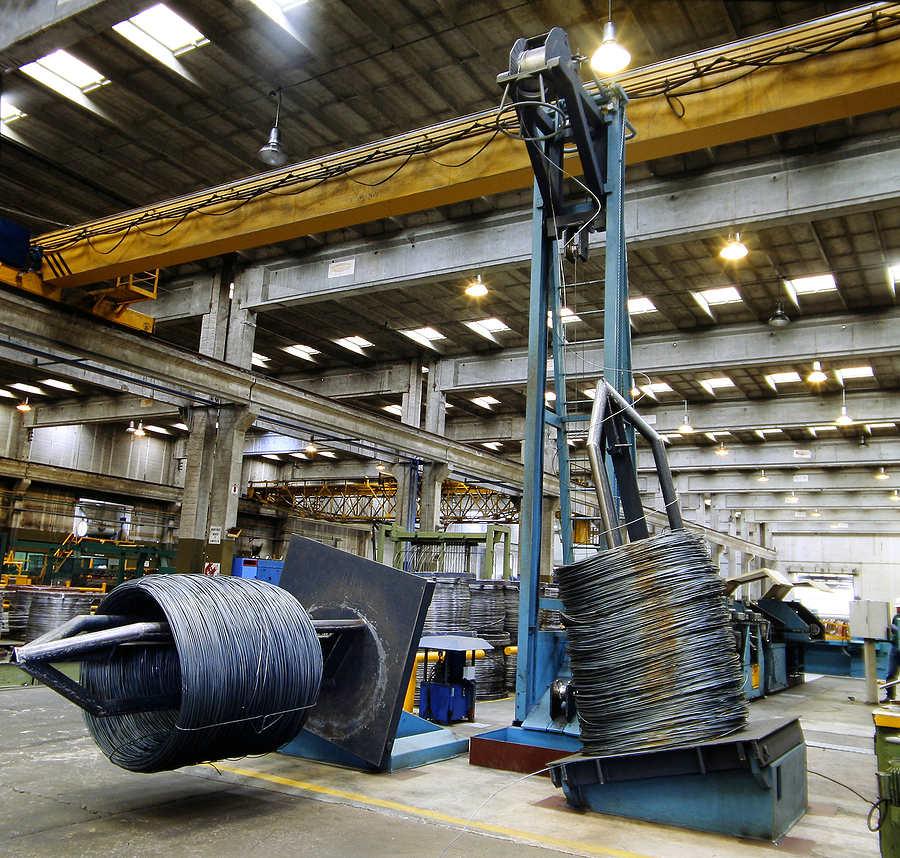Continue below to learn why steel is such as valuable and necessary metal that should be recycled and reprocessed as much as possible.

Facts About the Properties of Steel
Steel metal is an alloy of iron and carbon, and sometimes other elements. Because of its high tensile strength and low cost, it is a major component in buildings, infrastructure, tools, ships, automobiles, machines, appliances, and weapons. Iron is the base metal of steel. Iron is able to take on two crystalline forms (allotropic forms), body centered cubic (BCC), and face centered cubic (FCC), depending on its temperature. In the body-centered cubic arrangement, there is an iron atom in the center of each cube, and in the face-centered cubic, there is one at the center of each of the six faces of the cube. At the body-centered cubic phase, it becomes a weaker and softer metal. When steel has too little carbon, it is known as wrought iron. Wrought iron is malleable, but not as tough as steel.
Carbon Composition in Steel
The amount of carbon in steel affects its properties to a great extent. Steel with less than 0.2% carbon by weight is known as “mild steel” or “low-carbon steel”. It has good machinability, ductility, and weldability. This type of steel is used for making pipes, auto parts, machine tools, buildings, bridges, railway tracks, ships etc. Medium-carbon steel (0.2% to 0.5% carbon) is used for making tools, machine parts, pipes, railway tracks etc. because of its good hardness, strength, and wear resistance. High-carbon steel (0.5% to 1.0% carbon) is used for making knives, cutting tools, springs, bearings etc. because of its extremely high hardness and wear resistance. Ultra-high-carbon steel (1.0% to 2.0% carbon) is the hardest and strongest type of steel, but it is also very brittle. It is used for making cutting tools, knives, drill bits etc.
Classifications of Steel Metal
Steel can be classified into four main types: carbon steel, alloy steel, tool steel and stainless steel. Carbon steel is the most common type of steel. It contains only a small amount of carbon (usually less than 0.25%). Carbon steel is further divided into low-carbon steel, medium-carbon steel, and high-carbon steel. Alloy steel contains one or more alloying elements (e.g. manganese, silicon, nickel, titanium etc.) in addition to carbon.
Tool steel contains a high concentration of carbon (usually between 1.0% and 2.0%), as well as one or more alloying elements, such as manganese, chromium, vanadium, or tungsten, which gives it special properties that are suitable for making tools. Stainless steel is an alloy of iron, chromium and sometimes other elements (e.g. nickel, molybdenum, titanium etc.), that resists corrosion and oxidation. The chromium content of stainless steel ranges from 10% to 30%. Stainless steel is used for making kitchen utensils, surgical instruments, food processing equipment, chemical containers, and more.
The Importance of Steel Recycling
Steel recycling is important because it conserves natural resources, saves energy and reduces pollution. Steel is the most recycled material in the world—more than all other materials combined. While steel production emits greenhouse gases, the recycling of steel drastically reduces these emissions. Recycling just one ton of steel cans saves 2,500 pounds of iron ore, 1,400 pounds of coal and 120 pounds of limestone.
In addition to reducing greenhouse gas emissions, recycling steel conserves energy and other natural resources. It takes 75 percent less energy to recycle a pound of steel than it does to create a new pound from scratch. This is because the process of melting and reforming steel from recycled scrap uses only a fraction of the energy required to process virgin ore.
Steel recycling also reduces pollution by cutting down on the need to mine, transport and process new ore. The steel-making process is one of the most energy-intensive and polluting industries in the world. Every year, steel production generates around 2 billion metric tons of carbon dioxide, about 5 percent of global emissions. Reducing the need for new steel production can help to reduce these emissions and slow down climate change.
While recycling steel has many environmental benefits, it also makes good economic sense. Recycling steel saves money by reducing the need to buy new materials, and it also creates jobs in the steel recycling and manufacturing industries.
In short, steel recycling is important because it helps to conserve resources, save energy and reduce pollution. Steel is the most recycled material in the world, and recycling just one ton of steel can save 2,500 pounds of iron ore, 1,400 pounds of coal and 120 pounds of limestone. Recycling steel also creates jobs and reduces pollution.
Are you wondering which Indianapolis metal recycling center will pay you the most cash for your steel and iron scrap metal? Contact Garden City Iron & Metal at 1-888-586-5322 to speak with a professional scrap metal buyer in Indianapolis, Indiana. We accept all scrap metal and pay cash on the spot! We also offer free junk car removal.
Related Posts:
Are Steel Prices Good Right Now?
Facts About Steel Pickling
Why You Should Recycle Steel Automotive Parts
